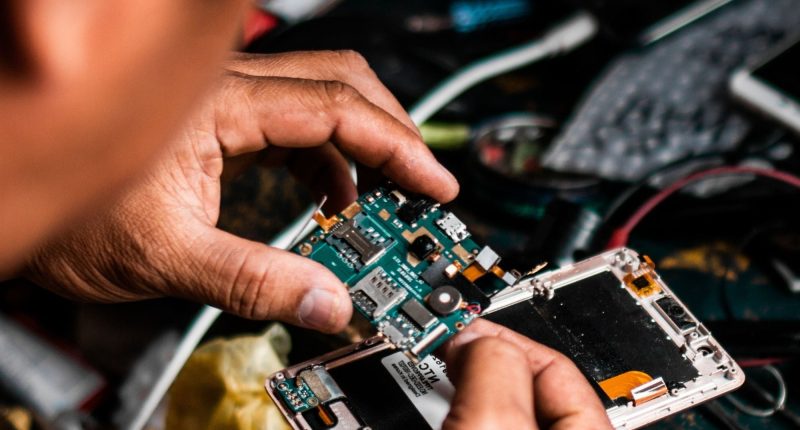
Opinions expressed by Entrepreneur contributors are their own.
You’re reading Entrepreneur India, an international franchise of Entrepreneur Media.
In order to realize its goal of becoming a significant player in the global semiconductor value chain, India needs to encourage the cultivation of homegrown talents. The Indian government’s initiatives such as the PLI and DLI schemes are providing crucial incentives and support for semiconductor development, however, to meet the surge in talent demand, focus should be on building capacity in chip designing and manufacturing. In January this year, speaking to the media on the sidelines of India Electronics and Semiconductor Association (IESA), S Krishnan, secretary, Ministry of Electronics and IT (MeitY) said that India has a design talent pool for semiconductors, it needs a talent pool for manufacturing and supply chain.
To meet its needs, India has forged partnerships with 104 universities to lay the foundation for talent development in semiconductor technology. “With our tie ups with different Universities the students will have first had experience of using live tools, knowledge will not be restricted to classrooms,” said Union Minister for Electronics and Information Technology, Ashwini Vaishnaw in an interaction with the media in March.
“Academia is a key contributor to talent, in order to achieve its semiconductor aspirations, India needs to up-skill its young engineers,” said Akarsh K Hebbar, global managing director, Vedanta Semiconductors and Display.
India has the talent pool, however, there have not been enough opportunities in the past to retain talent in India, mostly skilled engineers would move to other countries for jobs. “Countries which have an established semiconductor value chain don’t have enough manpower. All these other countries are trying to tie up with India to take talent from India to their countries. But this will be limited. In the semiconductor world, about 20 per cent of the talent pool is in India and they never had an opportunity to work here. Today, I think Indian companies are creating the ecosystem giving them the required opportunity to stay back,” said Varun Manwani, director – Sahasra Group.
With INR 1.3 lakh crore investments pouring into three approved plants in semiconductors including Tata Group’s pioneering initiative, India is poised to create 10 lakh jobs by 2025-2026, driving economic prosperity. Similarly, Lam Research aims to utilize the Semiverse Solutions portfolio to deliver a virtual nanofabrication environment to help train up to 60,000 semiconductor engineers in India over the next 10 years. Public private partnership initiatives have consistently made a skilled talent pool available, supporting the talent requirement of electronics manufacturing companies.
While there are various government initiatives, PPP projects and industry-led programmes to provide skill-based training for jobs in the electronics sector, the expected rise in the supply chain localisation will increase the demand for developing a talent pool with a highly skilled workforce. For instance, to support the semiconductor manufacturing units, there is a demand for 10,000-13,000 skilled semiconductor engineers which is to be met by 2027. Having realized this, the GoI is already considering revamping the Skill India Mission which aims to train the Indian workforce on future-ready skills.
Skill Development Council offers comprehensive courses covering semiconductor manufacturing technology, integrated circuit design, electronics engineering, and materials science, empowering aspiring professionals with the knowledge and skills needed to excel in the semiconductor industry. While initiatives like those undertaken by IITs and many engineering colleges are commendable, we need to scale up our efforts to ensure a robust talent pipeline. “The Electronic Sector Skill Council has introduced diploma and certification programs to address manufacturing requirements, but a lot needs to be explored. Internationally, competency-based apprenticeship programs have proven successful in addressing talent shortages in the chip industry. By embracing apprenticeships, India can bridge the gap between industry demands and workforce skills, nurturing expertise in R&D, manufacturing, and quality control. This will not only bolster our competitiveness but also attract more investments, positioning India as a formidable force in the global semiconductor landscape,” said Sumit Kumar, Chief Strategy Officer, TeamLease Degree Apprenticeship.
Forecasts predict that the Indian market for semiconductors will reach over $55 billion by 2026, with demand largely driven by three sectors—smartphones and wearables, automotive components, and computing and data storage. With an anticipated market size of more than $100 billion and an additional 600,000 jobs by 2030, the Indian semiconductor ecosystem is poised to become an important contributor to growing the global industry to $1 trillion by 2030.
This article is from Entrepreneur.com









